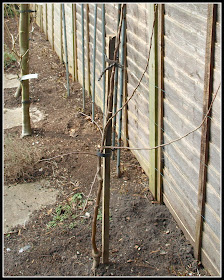Mark's Multi-Lentil Soup
Ingredients (Makes 2 generous or 4 small servings)
1 large onion, peeled and chopped
1 large carrot, peeled and diced
Approx 200g dried lentils - of 4 or 5 types (this time I used Red Lentils, Yellow Lentils, Mung-beans and Green Split Peas). If you want to use larger pulses, such as beans, you may have to soak and pre-cook them.
1 tsp curry powder
1 tsp yellow Mustard seed
1 tsp Fennel seed
Half tsp ground Cumin
Half tsp Chilli flakes
Approx 1 litre water (or stock if you have some available)
Approx 1 tbsp vegetable oil
(Note: use any spices you fancy, or have to hand, adjusting to taste!)
Method
Cook the onion in the oil, over a low heat, in a large saucepan
When the onion is translucent but not brown, add all the remaining ingredients
Bring the pan to the boil, stir well, cover, and then let it simmer for about an hour
The various types of lentils etc will perform differently - some will fall completely, some will remain fairly firm - but this is what you want, different textures
After an hour, check that all the lentils are cooked. If not, simmer them for a bit longer
Add some more water / stock if necessary to achieve a consistency that suits you (I wanted mine to be quite thick and chunky)
A few minutes before serving, season the soup. Note: do not add salt early in the cooking time, because this will prevent the lentils softening properly
If desired, blend the soup to a smooth consistency, otherwise leave it as it is
Serve with crusty bread!
Making this nutritious, healthy, warming soup is almost as easy as opening a can, but the end result is 100 times nicer!


















































